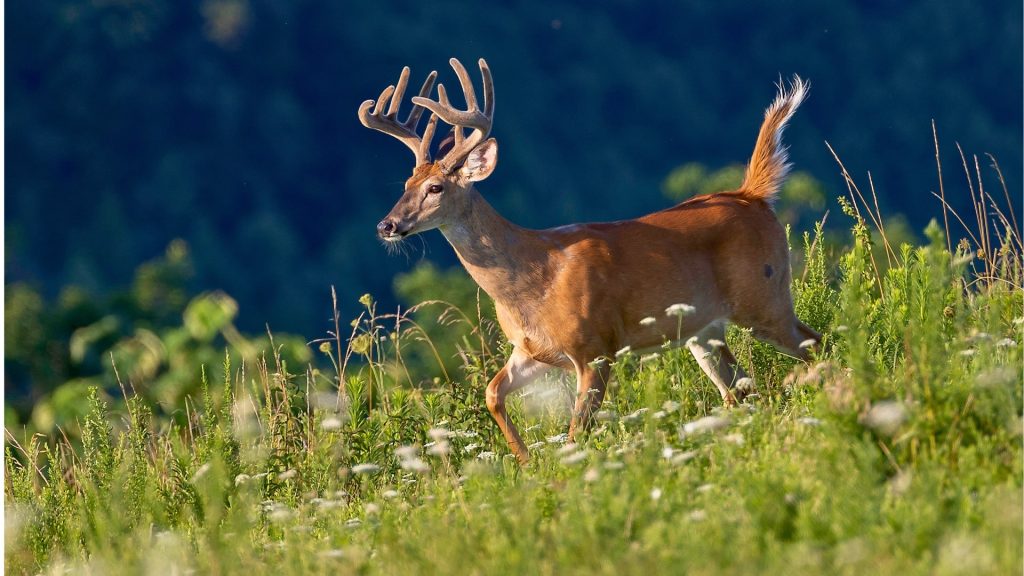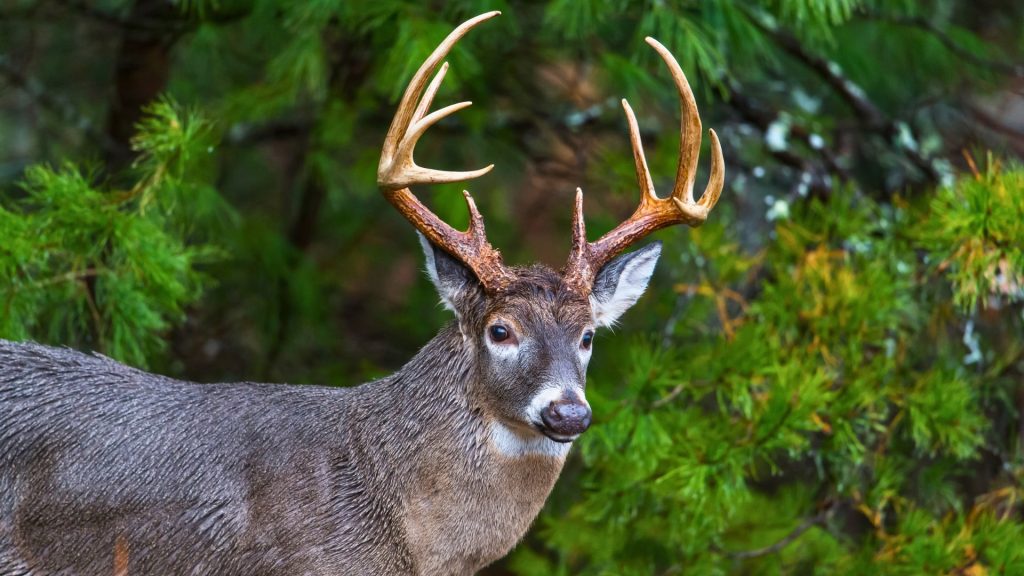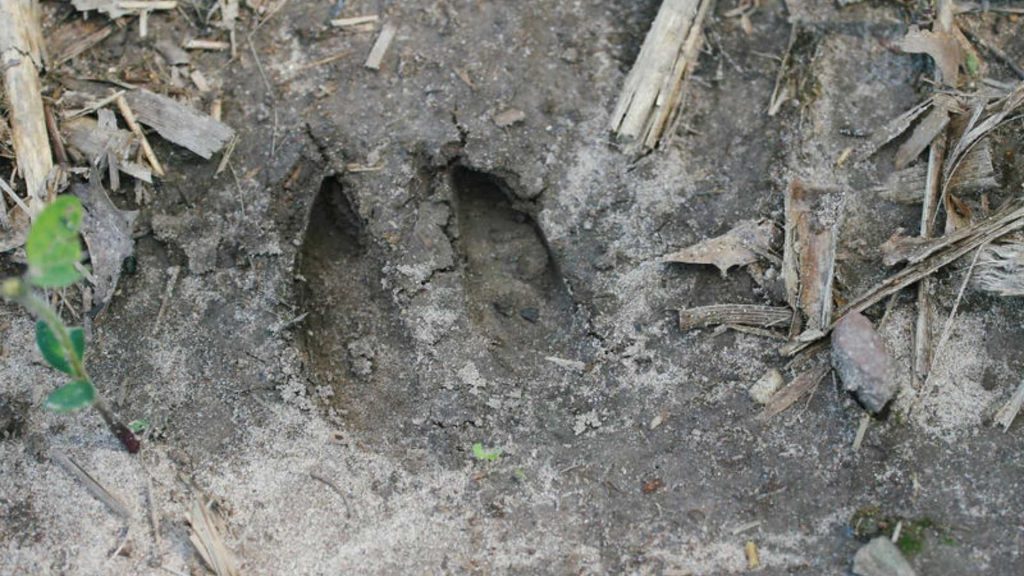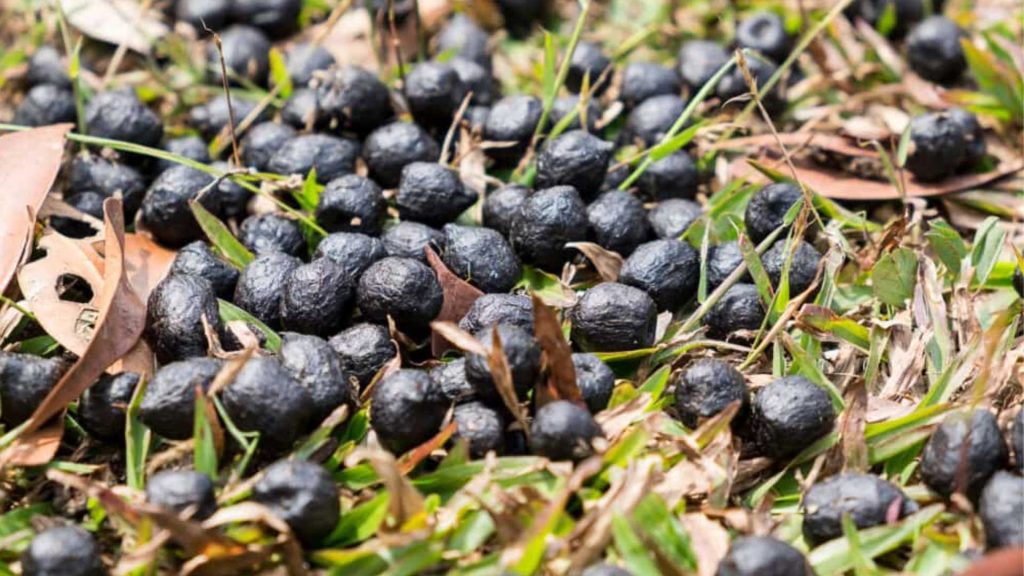Physical Characteristics
White-tailed deer (Odocoileus virginianus), also commonly known as Whitetail, and Virginia deer, are easily recognized by their reddish-brown coat and white underbelly. They have a small, black nose and large, rounded ears. Bucks (males), are typically larger than does (females), and grow antlers that can reach up to three feet in length.
Behavior
White-tailed deer are generally solitary animals, except during mating season when males actively seek out females. During the rest of the year, they may form small social groups, usually consisting of females and their offspring. These groups may come together in larger herds during the winter, when food is scarce and the risk of predation is higher.
Whitetails are primarily active during the early morning and late evening hours, though they may be active throughout the day. They are known to be agile and quick runners, able to reach speeds of up to 30 miles per hour when threatened. When startled, they will lift their white tail, which serves as a warning signal to others in the area.
Habitat
White-tailed deer are found throughout North America, and are particularly common in wooded areas with plenty of cover for hiding and protection. They can also be found in suburban and urban areas, and are known for feeding on garden plants and other vegetation.
Diet
They are herbivores and primarily feed on grasses, leaves, fruits, and acorns. They have a four-chambered stomach that allows them to digest tough plant material.
Breeding
White-tailed deer breed during the fall and winter months, with fawns being born in the spring or early summer. Fawns are born with spots on their coat, which helps to camouflage them from predators, such as wolves, coyotes, and mountain lions.
Ecological Role
White-tailed deer play an important role in their ecosystem by helping to control vegetation growth and providing food for predators such as coyotes and wolves. However, in some areas, overpopulation of white-tailed deer can lead to habitat destruction and damage to crops and gardens.
White-Tailed Deer Hunting
Hunting whitetail deer is a popular recreational activity in the United States. Hunters use a variety of methods, including rifles, shotguns, and bows, to pursue white-tailed deer. Depending on the region, hunting seasons may vary in length and regulations. In some areas, hunters may only be allowed to hunt bucks (male deer), while in other areas, they may also be allowed to hunt does (female deer).
Hunting whitetails requires skill, patience, and a good understanding of the animal’s behavior and habitat. Many hunters will scout out an area before the hunting season begins, looking for signs of deer activity such as tracks, droppings, and rubs on trees. They may also set up trail cameras to monitor deer movement in the area.
During the hunting season, hunters may use various techniques to attract deer, such as using calls or scent lures. When they spot a deer, they will typically try to get as close as possible before taking a shot. It is important for hunters to take ethical shots that will result in a clean, humane kill.
In addition to being a popular recreational activity, hunting also serves an important role in managing white-tailed deer populations. In areas where deer populations are too high, hunting can help to reduce the number of deer and prevent damage to crops and other vegetation. Properly managed hunting can also help to maintain healthy and sustainable populations of white-tailed deer.
Tracks & Signs
White-tailed deer tracks are among the most common and easily recognizable of all North American mammals. Each track typically measures around 2 to 3.5 inches (5.1 to 8.9 cm) in length and is heart-shaped, with two pointed toes pointing forward and a rounded rear portion.
White-tailed deer scat, or feces, is a common sign of their presence. It is usually pellet-like, similar to that of other deer species. Fresh scat may have a moist appearance, while older scat becomes drier and crumbles easily.
Conservation
White-tailed deer populations have been impacted by habitat loss and over-hunting in some regions, but conservation efforts have been successful in maintaining stable populations in many areas. Organizations such as the National Deer Association work to protect and restore deer habitat and populations.
Did You Know?
White-tailed deer have a phenomenon called “group fawning”.
In areas with high deer populations, multiple does may give birth in close proximity, creating “nursery herds.” This collective fawning strategy provides better protection against predators, as there are more eyes and ears to detect threats.
They have the incredible ability to regenerate damaged tissue.
If injured, their bodies can produce new cells to heal wounds, including damaged muscles and severed tendons. This remarkable regenerative capacity helps them recover from injuries and survive in the wild.
White-tailed deer have a unique breeding strategy called “delayed implantation”.
After mating, the fertilized egg does not immediately attach to the uterine wall. Instead, it remains dormant for several months before implanting and initiating pregnancy. This adaptation allows does to time their births for optimal conditions.
Image sources: Meateater, AZ Animals





